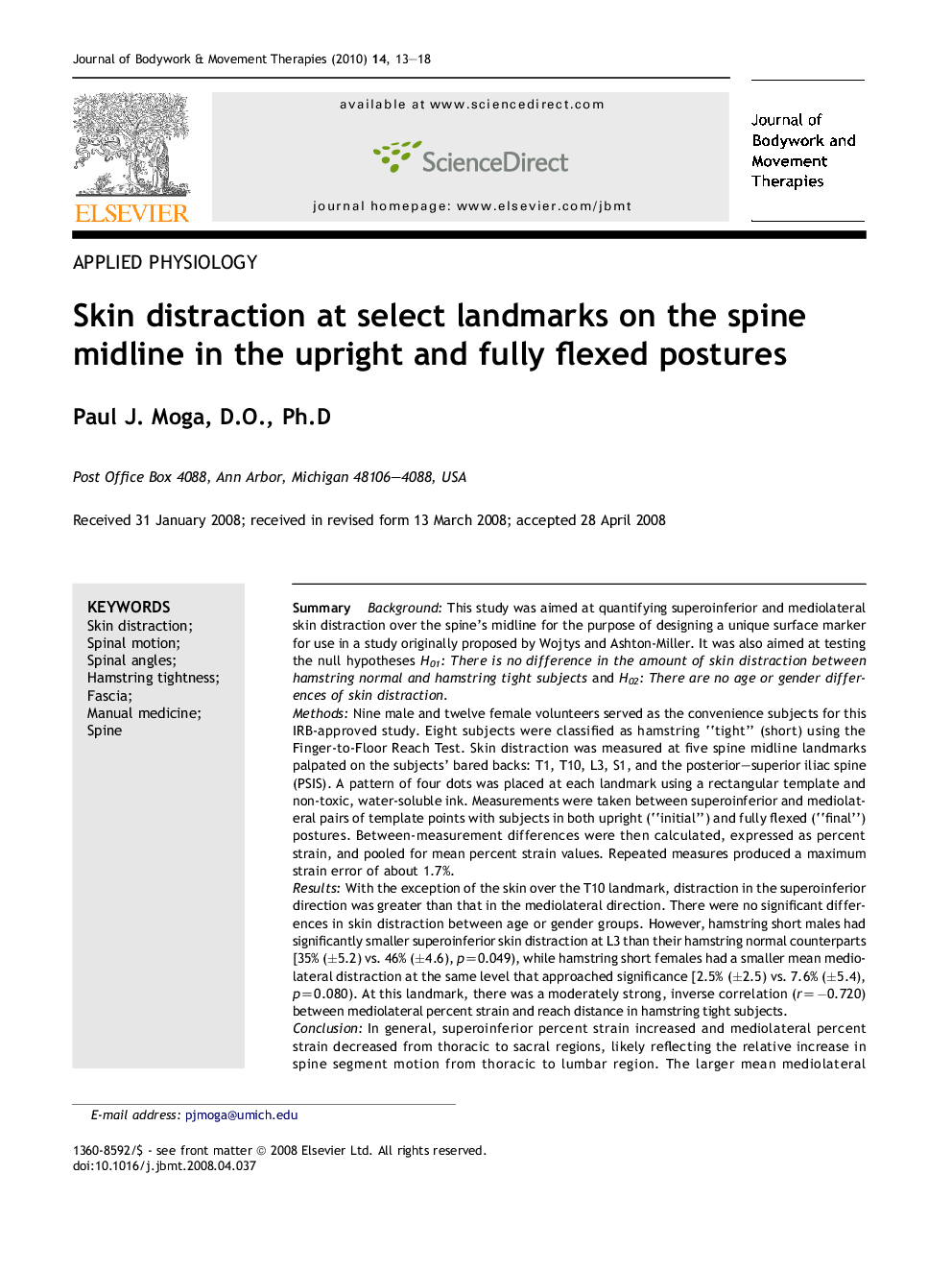| کد مقاله | کد نشریه | سال انتشار | مقاله انگلیسی | نسخه تمام متن |
|---|---|---|---|---|
| 2619553 | 1135502 | 2010 | 6 صفحه PDF | دانلود رایگان |

SummaryBackgroundThis study was aimed at quantifying superoinferior and mediolateral skin distraction over the spine's midline for the purpose of designing a unique surface marker for use in a study originally proposed by Wojtys and Ashton-Miller. It was also aimed at testing the null hypotheses H01: There is no difference in the amount of skin distraction between hamstring normal and hamstring tight subjects and H02: There are no age or gender differences of skin distraction.MethodsNine male and twelve female volunteers served as the convenience subjects for this IRB-approved study. Eight subjects were classified as hamstring “tight” (short) using the Finger-to-Floor Reach Test. Skin distraction was measured at five spine midline landmarks palpated on the subjects’ bared backs: T1, T10, L3, S1, and the posterior–superior iliac spine (PSIS). A pattern of four dots was placed at each landmark using a rectangular template and non-toxic, water-soluble ink. Measurements were taken between superoinferior and mediolateral pairs of template points with subjects in both upright (“initial”) and fully flexed (“final”) postures. Between-measurement differences were then calculated, expressed as percent strain, and pooled for mean percent strain values. Repeated measures produced a maximum strain error of about 1.7%.ResultsWith the exception of the skin over the T10 landmark, distraction in the superoinferior direction was greater than that in the mediolateral direction. There were no significant differences in skin distraction between age or gender groups. However, hamstring short males had significantly smaller superoinferior skin distraction at L3 than their hamstring normal counterparts [35% (±5.2) vs. 46% (±4.6), p=0.049), while hamstring short females had a smaller mean mediolateral distraction at the same level that approached significance [2.5% (±2.5) vs. 7.6% (±5.4), p=0.080). At this landmark, there was a moderately strong, inverse correlation (r=−0.720) between mediolateral percent strain and reach distance in hamstring tight subjects.ConclusionIn general, superoinferior percent strain increased and mediolateral percent strain decreased from thoracic to sacral regions, likely reflecting the relative increase in spine segment motion from thoracic to lumbar region. The larger mean mediolateral distraction at the T10 level was probably the result of traction on the skin at that level by the dependence of appendicular structures in forward flexion. Finally, the negative value at the T1 landmark was probably the result of the cervical spine extension that occurred during flexion as the subjects lifted their heads to look up.
Journal: Journal of Bodywork and Movement Therapies - Volume 14, Issue 1, January 2010, Pages 13–18